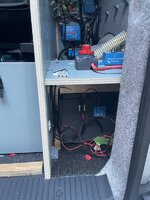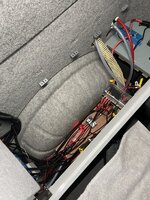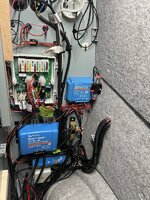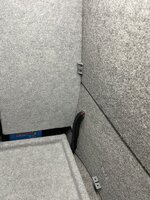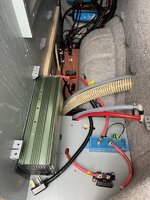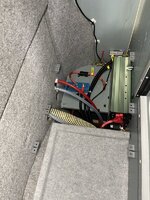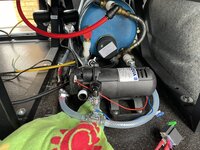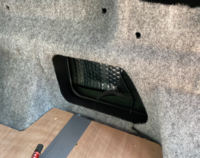So, after playing with three heat pads on an aluminium plate and seeing 50C, I reduced to two and added the other to the side of the battery. Tested and provide results in the Electrics thread.
Now I’ve removed all the wiring and started making up my own cabling and connectors, matching cable length and current draw with correct AWG cable.
Again, kind of making this up as I go along. I know in my head what to do and just work methodically through it.
I’ve utilised some old ply to make bases, added an isolator switch and fuse too. Then run this off to a distribution box for minor break outs and the Planar diesel heater.
Then I have a separate run back directly to the battery for all things going back into the battery, (MPPT, DC-DC and AC-DC).
Negative to the south of the shunt and everything else to earth.
I need to think about the shower connections and possibility of leaks right above the battery.
Securing the whole thing in.
Adding the Renology display - allowing me to shut the battery down
Location for the solenoid to switch the battery heater on, and associated switch
Then it’ll be onto the wiring and connection for the water heater. I’m going to utilise a solenoid as it’s switching 25Amps!
View attachment 101526View attachment 101527View attachment 101528


